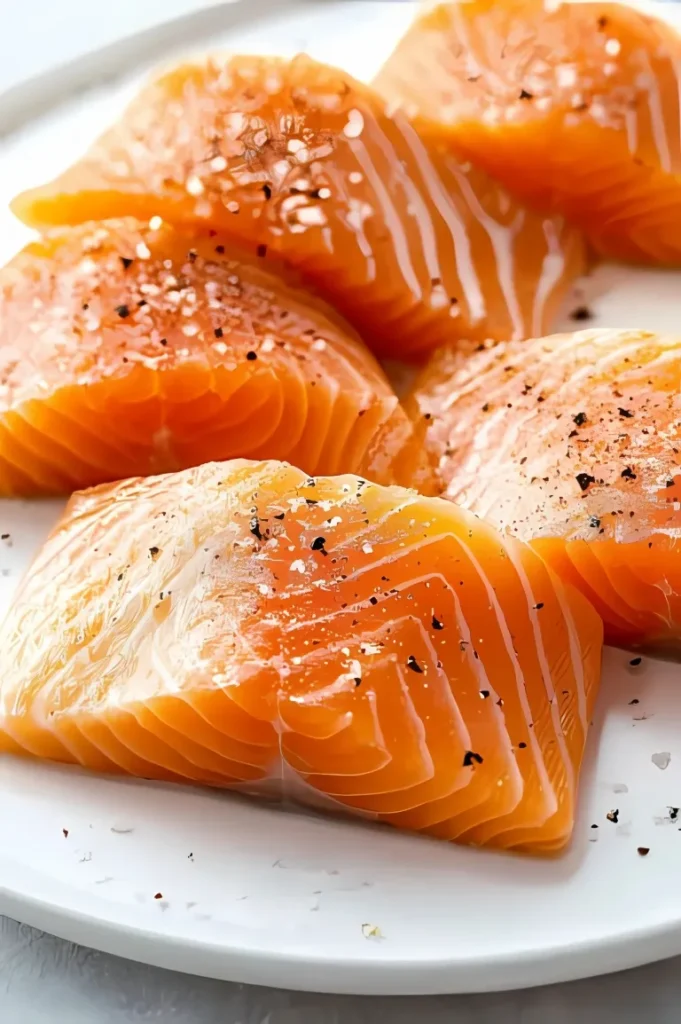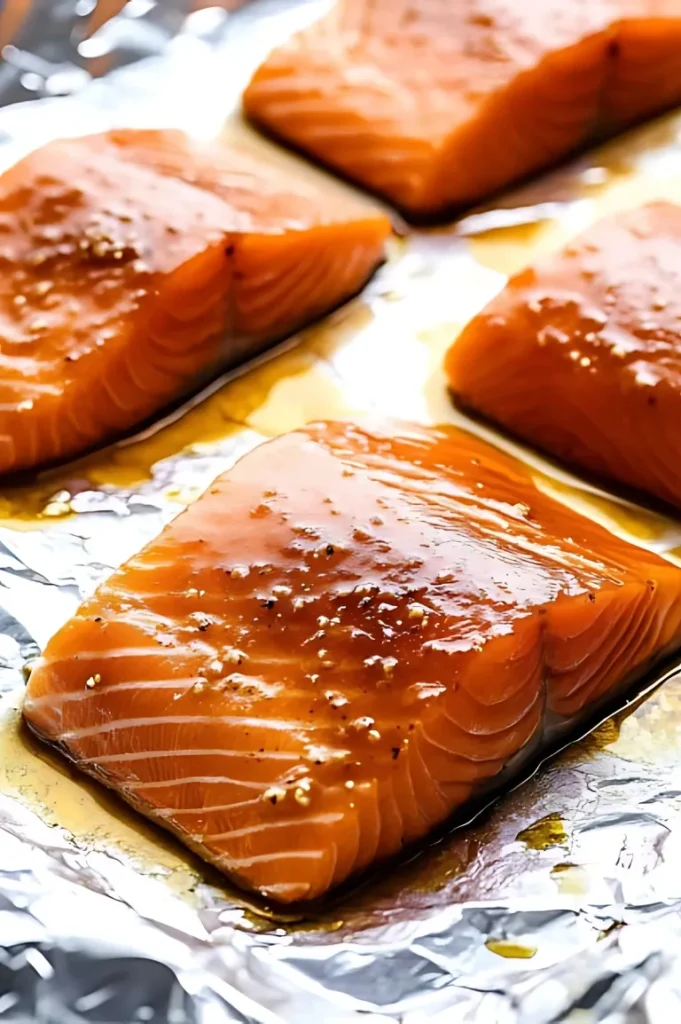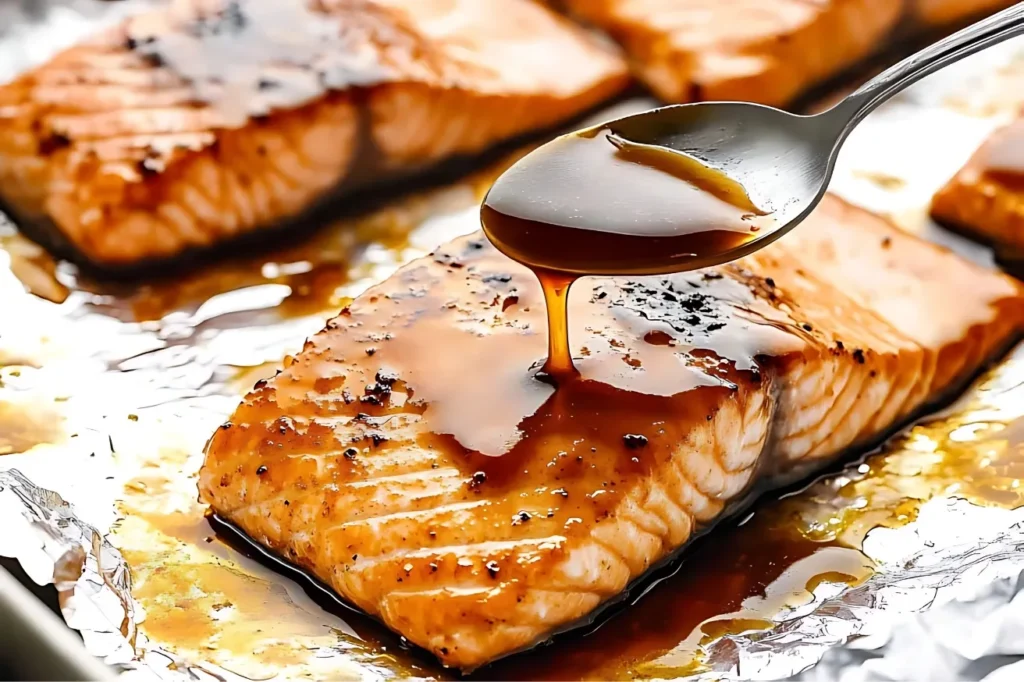The first time I tasted a Miso Salmon Recipe, it was magical. The rich, umami flavors of Japanese-inspired seafood made my taste buds sing. It turned a simple dinner into a memorable experience.
This dish is more than just food. It’s a journey that connects old traditions with new kitchen ideas.
Imagine making a dish that’s both sweet and savory in your own kitchen. Miso salmon is a Japanese-inspired seafood dish that’s both fancy and easy to make. It’s a hit with home cooks who want restaurant-quality flavors without the fuss.
Key Takeaways
- Miso salmon combines traditional Japanese ingredients with contemporary cooking techniques
- Perfect for home cooks seeking exciting seafood recipes
- Offers a harmonious blend of umami and sweet flavor profiles
- Requires minimal ingredients for maximum taste impact
- Adaptable to various cooking methods and skill levels
- Provides a nutritious and delicious meal option
Understanding Miso Salmon and Its Origins
Explore the world of miso salmon, a dish that mixes traditional Japanese flavors with healthy eating. It combines the deep tastes of fermented ingredients with the goodness of seafood. This makes a meal that’s tasty and full of nutrients.
What is Miso Paste?
Miso paste is a key part of Japanese cooking. It’s made from fermented soybeans, salt, and koji culture. This ingredient adds a rich umami flavor to dishes, making them special.
Its taste can vary from sweet and mild to strong and salty. This depends on how long it’s fermented.
- Typically made from soybeans
- Fermented using traditional techniques
- Available in multiple varieties
Traditional Japanese Influences
Miso salmon’s roots go back to Japan’s cooking history. Japanese chefs used fermented ingredients to marinate fish. This created dishes with deep flavors, showing off their preservation and taste skills.
Health Benefits of Miso and Salmon
Miso paste and salmon together are a nutritional powerhouse. This meal offers many health benefits, including:
- High-quality protein from salmon
- Probiotics from fermented miso
- Essential omega-3 fatty acids
- Reduced inflammation markers
Choosing this nutrient-dense culinary delight is good for your body. It supports your health and satisfies your taste buds.
Essential Ingredients for Miso Salmon


Starting with the right ingredients is key to making great miso salmon. You’ll want to pick fresh salmon as the base. Look for wild-caught or sustainably farmed salmon for the best taste and texture.
The miso marinade is the heart of your dish. You’ll need:
- White or yellow miso paste
- Mirin (sweet rice wine)
- Sake or rice vinegar
- Brown sugar or honey
- Soy sauce
- Sesame oil
Your miso marinade turns simple fish into a gourmet meal. The mix of sweet, salty, and umami flavors will wow your guests. For more seasoning tips, check out this link.
If you follow a special diet, no worries. Use gluten-free soy sauce or tamari instead of regular soy sauce. Maple syrup is a sweetener option if you avoid refined sugars.
Remember, taste your marinade before using it on the salmon. The flavors should blend well, with nothing too strong.
Kitchen Tools and Equipment Needed
To make the perfect miso salmon, you need the right tools and equipment. The right utensils can make your cooking better. Here are the essential tools for a delicious miso salmon dish.
Basic Utensils for Success
Every home chef should have these basic tools:
- Large mixing bowl for marinade preparation
- Measuring cups and spoons
- Sharp fillet knife
- Baking sheet or rimmed sheet pan
- Parchment paper or silicone baking mat
Advanced Cooking Equipment
For better miso salmon, consider these advanced tools:
- Broiler pan for perfect caramelization
- Fish grill basket for even cooking
- Digital meat thermometer for precise temperature control
- Cast-iron skillet for alternative cooking methods
Plating Techniques and Serving Tools
Professional plating makes your miso salmon look as good as it tastes. Here are some serving tools:
- Large serving platter
- Fish spatula for delicate handling
- Garnish scissors
- Decorative plates that complement the dish’s colors
Your kitchen tools are key to making a restaurant-quality miso salmon. With the right equipment, your cooking will go from ordinary to extraordinary.
Step-by-Step Preparation Guide

Learning to make miso salmon takes focus and skill. Start by picking the freshest salmon you can find. Good ingredients are key to a tasty dish that will wow your guests.
Begin by getting your salmon ready with these important steps:
- Pat the salmon dry with paper towels to remove excess moisture
- Check for any remaining pin bones and remove them carefully
- Rinse the fillet under cold water and pat dry again
To make the perfect miso marinade, blend essential ingredients. Mix traditional miso paste with rice vinegar, mirin, and soy sauce. Stir until it’s smooth and even.
When you apply the marinade, make sure to cover the salmon well. Use a brush or spoon to spread it evenly. Pro tip: Let the salmon marinate for at least 30 minutes to soak up more flavor.
- Place salmon in a shallow dish
- Pour marinade over the fish
- Gently massage marinade into the salmon
- Cover and refrigerate
Your miso salmon is now ready for cooking. It promises a delicious meal that blends Japanese flavors with modern cooking methods.
Marination Techniques and Timing
Learning how to make a great miso salmon marinade can turn a simple fish dish into a work of art. The right marination brings out the deep, rich flavors that make this dish so unique.
When you’re making your miso salmon, how long you marinate it is key. It’s all about getting the right mix of flavors into your salmon.
Perfect Marinade Ratios
To make a top-notch miso salmon marinade, you need to be precise. The best mix usually includes:
- 2 tablespoons white or yellow miso paste
- 1 tablespoon sake
- 1 tablespoon mirin
- 1 teaspoon soy sauce
- 1 teaspoon sesame oil
Optimal Marination Duration
The marination time for salmon can vary from 30 minutes to 2 hours. A shorter time gives a light flavor, while longer times make it stronger. Don’t marinate for more than 4 hours to avoid over-salting the fish.
Storage Tips During Marination
When storing marinated salmon, safety is crucial. Keep it in an airtight container in the fridge. This keeps the fish fresh and prevents bacteria growth. Here are some storage tips:
- Use a non-reactive container (glass or ceramic)
- Keep the salmon covered with marinade
- Store it in the coldest part of your fridge
- Use it within 24 hours of marinating
Pro tip: If you’re making the marinade ahead of time, mix the ingredients separately and store them in the fridge. This way, you can marinate the salmon right before cooking, keeping it fresh and flavorful.
Cooking Methods and Temperature Guidelines

Choosing the right cooking method is key to a delicious miso salmon dish. Oven-baked miso salmon is easy and always turns out great. Preheat your oven to 400°F for a perfect caramelized outside and a tender inside.
It’s important to follow temperature guidelines for food safety and the best salmon taste. Use an instant-read thermometer to check the salmon’s internal temperature. It should be 145°F, making it opaque and flaky.
Broiling can add a beautiful glaze to your miso salmon. But, be careful not to burn the miso marinade. Grilling is another great option. Cook the fish skin-side down on a preheated grill at medium-high heat. This method crisps the skin and adds smoky flavors.
Each cooking method adds something special to your miso salmon. Whether you bake, broil, or grill, the goal is to keep it moist and develop a rich glaze. With practice and patience, you’ll find the perfect method for your taste and cooking style.
FAQ
What is miso salmon?
Miso salmon is a dish from Japan. It’s made by marinating salmon in a sweet and savory miso paste. This creates a tasty glaze on the fish.
The marinade includes mirin, sake, and brown sugar. These ingredients caramelize when cooked, making the fish even more delicious.
How long should I marinate the salmon?
Marinate the salmon for 30 minutes to 2 hours. Longer than that, it might get too salty. Keep it in the fridge and don’t marinate for more than 2 hours.
Can I use different types of miso paste?
Yes, you can use different miso pastes. White, yellow, or red miso each have their own taste. White or yellow miso is best for salmon to keep the flavor balanced.
What are the health benefits of miso salmon?
Miso salmon is very healthy. Salmon has omega-3s for heart and brain health. Miso adds probiotics, minerals, and antioxidants.
This dish is also high in protein and low in calories. It has vitamins B12 and D, making it a great meal choice.
What cooking methods work best for miso salmon?
You can cook miso salmon in several ways. Oven-baking at 400°F is the most common method. It cooks evenly and caramelizes well.
Broiling gives a crispy exterior, while grilling adds a smoky taste. Choose your method based on what you have and what you like.
How do I know when the salmon is fully cooked?
The salmon is cooked when it’s 145°F inside and flakes with a fork. It should look opaque and have a light pink color.
Cooking time varies by the fish’s thickness. It usually takes 10-15 minutes in the oven.
Can I make miso salmon with frozen fish?
You can use frozen salmon, but fresh is better. Make sure it’s thawed before marinating and pat dry to remove moisture.
Thaw it in the fridge overnight. Avoid microwaving, as it can cook the fish partially.
What side dishes pair well with miso salmon?
Miso salmon goes well with steamed rice, roasted veggies, and stir-fried bok choy. Quinoa or a light salad also work well.
Choose sides that match the dish’s umami flavor. Edamame, Brussels sprouts, or a cucumber salad are good options.


4 thoughts on “Miso Salmon Recipe”